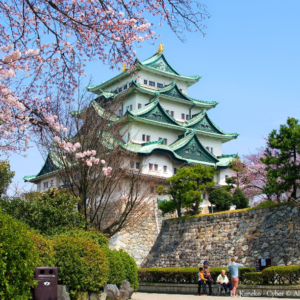
How to Plan a Nagoya Culture Trip
Are you planning to visit the Magical land of Nagoya during the cherry blossom season? Well, there are many things to do, and you have to make a proper itinerary. If you decide to have a culture trip, then make sure you plan a historical place, local food, museum, shopping venue, visiting a local artisan and a bevy of other activities as well. Book your flying ticket to Nagoya quite beforehand to avail of the best offer.
Walk around the Noritake Garden: Noritake garden dates from 1904 and is one of the famous ceramic makers in Japan. Strolling through the garden you may check some period relics like the old-fashioned kilns and a gallery where the history of ceramic production is reflected. If you want to try your hands at glazing your own piece, there is a Craft and Museum centre. You may buy your own ceramic items and souvenirs here.
- Ascend Nagoya TV tower: The Nagoya TV tower, 180 meters high claims to be the oldest of its kind that was built even before the Tokyo Tower. The observation deck sits here at a height of 100 meters from where you may have a look at the Hisaya Odori Park.
- Sample the local food: Nagoya has a wide range of local delicacies. Never leave the city without having a bite of miso, a sauce made from soya bean used with a fried pork cutlet. Try temusu, a kind of shrimp tempura stuffed with rice and seaweed coated.
- Visit Tokugawa Art Museum: If you love art, then visit the Tokugawa art museum, which will tell you everything about Japanese art and museum. Over 10,000 items are here on display and you may check the galleries dedicated to artwork. A plethora of wealth that belongs to the cultural relics that feature the legend of the Tale of Genji.
- Check the Nagoya Castle: The Nagoya castle was built in the 17th century during the reign of Tokugawa Leyasu, which was razed during World War II. The structure that stands today is was rebuilt in 1959, and you may check some features like the Shachihoko, a creature with a tiger head. Check the Ninomaru-en, a garden surrounding the castle with idyllic tea houses and you may find refreshing tea here.
- Shopping with bargaining: If you are in Nagoya, then never miss a chance to bargain for Komehyo, a large discount store famous for selling second-hand items. The store is situated at a seven-floor building that stacks items like clothes, jewellery, shoes and even antiques. If you love looking for buried treasure, then look here especially if you have good skills in bargaining.
25 Best Things to Do in Nagoya (Japan) – The Crazy Tourist
- Try the local desserts: Japan is known for Mochi, a famous sticky dessert, and many other regional varieties too. The sticky and gummy treat is made from rice flour and sugar mixed together to a yummy mix. Flavored with matcha (green tea powder) or azuki (red paste), this is a very sumptuous dessert, which you mustn’t miss.
- Enjoy the Nagoya Masturi: In case you land up in Nagoya in the month of October, then you should never miss the famous festival, Nagoya Masturi. The festival is purposefully dedicated to the three heroes of Nagoya. This event takes place at the Hisaya Odori. Watching the procession as well as floats covered in colourful puppets is a great experience.
- Visit the Toganji Temple: The Toganji temple, built in the 16th century is famous for having a large sculpture of a seated Buddha. The temple is built on a Hindu ideology honouring the Goddess Saraswati, who has her own festival in the month of May.
- Watching the Nagoya Sumo tournament: The Nagoya Sumo Festival occurs in the month of May and extends for over fifteen days. People come here to watch the tournament as some of the best sumo wrestlers give their performance in the battle ring. One of the old and quintessential traditions of Japan is the Sumo tournament and you would love the wrestlers purifying the ring by throwing salt before every match.
- Visiting the Arimatsu tie Dyeing museum: Experience the traditional style of Shibori or tie-dyeing, which is one of the quirky attractions and you may observe the local artisans at work. You might have heard many tales about the Shibori dyeing but watching the local artisan at work is a better experience.


